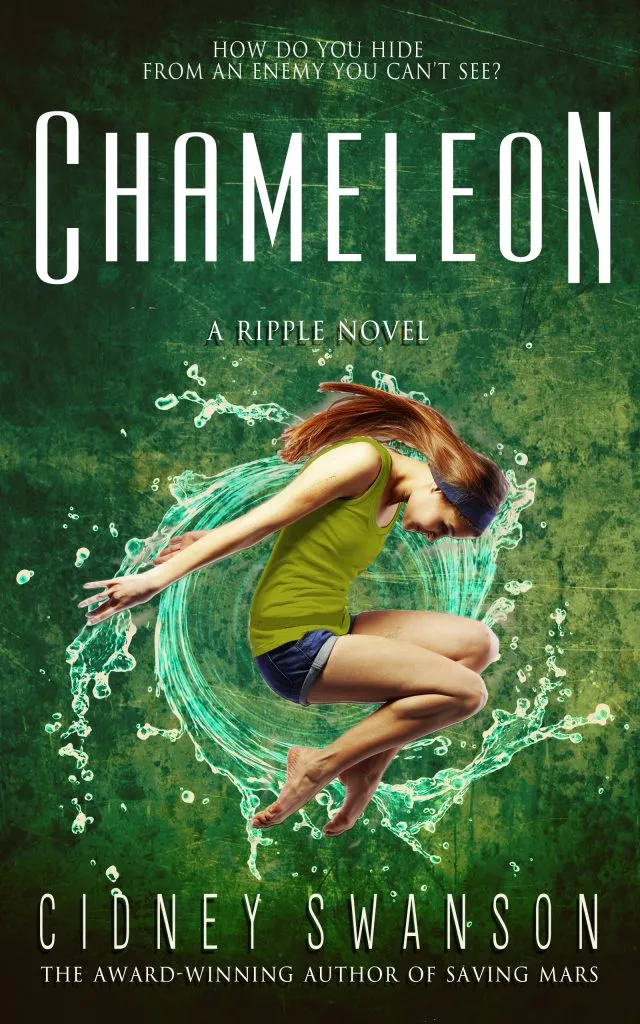Book Spotlight: Saving Mars (Saving Mars, Book 1) by Cidney Swanson

Book Spotlight: Saving Mars (Saving Mars, Book 1) by Cidney Swanson
SALUTATIONS, Beardies!
Last weekend, I was in a state of bliss, enjoying a rare, quiet evening visiting my parents, watching the Olympics and looking forward to an uneventful week to come. My tranquility was shattered, however, by the arrival of the following text from Joshua.
The e-mail contained not an assignment, but a mission that—should I choose to accept it—would spell the end of my uneventful week.
Tomorrow our friend, Cidney Swanson, author of The Ripple Trilogy, celebrates the publication of her fourth novel, Saving Mars. The e-mail to which Joshua referred contained an invitation to be a first reviewer! The catch: I had only one week to read the book and write the review—a short deadline; a perilous mission. I thought about respectfully declining, but in the end I couldn’t resist the opportunity to bring you this very special Book Spotlight.
{—PREMISE—}
JESS and her family live in Mars Colonial, a human settlement on Mars that began as an initiative on the planet of Terra. The Terrans believe Mars Colonial failed years ago and have no idea that it still exists, and the Marsians intend to keep it that way despite the constant Terran surveillance. Jess can pilot any craft with wings and she dreams of becoming a raider like her late grandfather, flying missions to Terra to get the ration bars that keep the Marsians alive. Then, a mistake on a flight leaves her in disgrace and suspended from the skies. But when Mars’ food supply is compromised, Jess’ alter-abled brother, Ethan, is chosen to go on an emergency raid to get rations. Jess knows that the trip will be devastating to Ethan with his alter-abilities, and figures out a way to join him. Then, when everything about the mission is going wrong, Jess is faced with a terrible choice: Save her brother and her crewmates, or save her planet.
{—GEMS FOR WRITERS—}
1. WORLD BUILDING...
YOU knew I’d start with that, right? Cidney Swanson has a rare gift for world-building. Some writers do all their world-building in the first chapter and then throw the reader in headfirst and expect them to remember all the details. Swanson, on the other hand, builds her world slowly, brick by brick, in fine detail. From the political system of Mars Colonial, to the practice of celebrating one’s birthday twice each year because Mars takes twice as long as Earth to orbit the sun, to the extensive list of ingredients in a Marsian ration bar, everything is in place and well thought-out. When the book ends, the world is gloriously complete and real, and the reader is eager to return to it again and again.
2. CHARACTERIZATION...
EVERY one of these characters is fully realized, and all undergo growth and transformation through the course of the book. Jess’s character arc is especially well done, particularly her relationship with Ethan. She is a spunky and lovable heroine, ever the daredevil, fiercely protective of her brother, and determined to do anything to get back to flying after making a huge mistake. By the end of the book, she is just as headstrong, but has learned to see things from others’ perspectives and put the safety of others—and the survival of her planet—above her own desires.
3. SETTING & CULTURE...
ALTHOUGH she admits in her author’s note that she is no astrophysicist, Cidney Swanson obviously did her research about life on Mars and what it would take to sustain a human colony there. The setting is described in vivid detail, not only physically but also culturally. Marsians (“Martians” being an offensive, Terran term) can only go outside in high-tech suits to protect them from the temperature extremes and drink water only twice per day. Beyond those two daily “wet rations,” the use of water for anything, including tears, is considered wasteful. The old are treated with great respect, and a person’s first wrinkle is cause for celebration as it means they have survived. All of these cultural details, even more than the physical description of the setting, make the world of the Marsians that much more believable.
4. ALTER-ABILITIES...
JESS’s brother, Ethan, is what the Marsians consider “alter-abled.” He is an expert computer hacker, but in our world would probably be diagnosed with autism or Asperger syndrome. The portrayal of this condition is respectful, tender, and beautiful; it is an integral part of his character. For the most part, the Marsians respect Ethan for his hacking skills and brilliant inventions, rather than ostracizing him for his differences. I only wish the same held true on Earth for all who live with this condition, and I applaud Cidney Swanson for tackling this timely issue with such finesse.
{—RATING—}
{—CONCLUSION—}
ALTHOUGH that text from Joshua and my subsequent decision to take on this mission destroyed my hopes of an uneventful week, it was worth every minute! I cannot wait to hear more from these characters and hope that you, too, will take the time to read this book. Better yet, click over to Cidney’s blog—she’s doing a giveaway of a signed copy plus some nifty Mars-related swag. Go show her some love, and tell her The Bearded Scribe sent you!
***Saving Mars (2012) by Cidney Swanson, are published by and copyright Williams Press.
***Per FTC Regulations: I received a free Advance Reading Copy (ARC) from the author herself and was not compensated in any way, monetarily or otherwise, for this review.
























